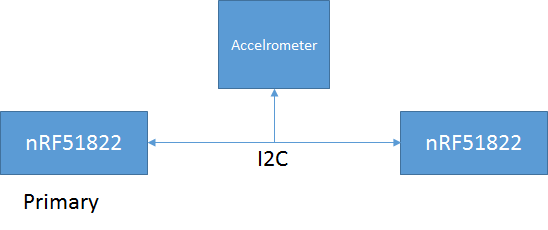I am working on a system with dual Bluetooth chips one acts as primary and the other as secondary.

I want these two communicate with a shared resource(Accelrometer) via I2C independently. But as per datasheet NRF51822 can not have a MultiMaster I2C. Is there any way to do it via soft I2C implementation? Both nRF51822also communicate with each other to send some command and share status information.

